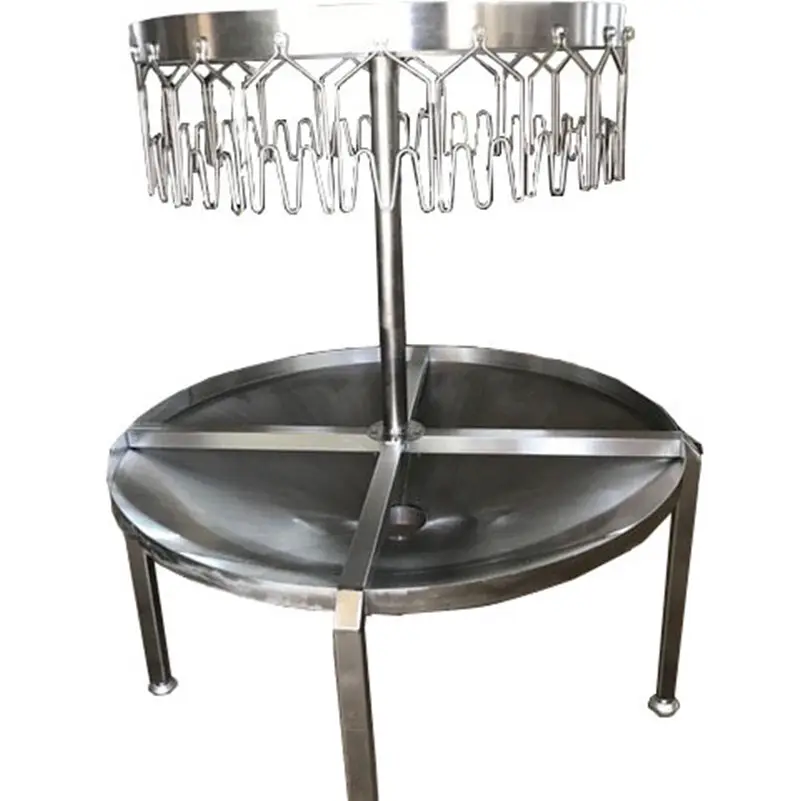Large Poultry Cages for Efficient and Comfortable Farming Solutions
Nov . 04, 2024 15:23 Back to list
Large Poultry Cages for Efficient and Comfortable Farming Solutions
The Benefits and Challenges of Large Poultry Cages in Modern Farming
In contemporary agriculture, the production of poultry is a significant aspect of the food supply chain. As the demand for poultry products increases, farmers are increasingly turning to large poultry cages as a means of enhancing productivity, improving biosecurity, and streamlining management practices. While the use of large poultry cages offers several advantages, it also raises important ethical and welfare considerations that cannot be overlooked.
Defining Large Poultry Cages
Large poultry cages are designed to house multiple birds in a contained environment. These cages are typically used in commercial egg-laying operations and broiler production systems. The primary purpose of these cages is to maximize space utilization and ensure efficient feeding, watering, and health management. Large cages can accommodate hundreds to thousands of birds, depending on the setup, and they often incorporate advanced technology to monitor and maintain environmental conditions.
Enhanced Productivity
One of the undeniable benefits of large poultry cages is the increase in productivity they offer
. By housing a larger number of birds in a confined space, farmers can produce significantly more eggs or meat within the same square footage compared to traditional free-range systems. This densification of livestock allows for greater control over feeding practices, resulting in quicker growth rates and higher yields. Additionally, the enclosed nature of the cages helps to reduce the risk of disease transmission among flocks, as it limits their exposure to external pathogens.Biosecurity Benefits
Biosecurity is a critical aspect of poultry farming, particularly in regions where avian diseases are prevalent. Large poultry cages provide an effective biosecurity measure by minimizing the interaction between flocks and wild birds, which are known carriers of various avian diseases. The enclosed design makes it easier to control factors such as ventilation, temperature, and humidity, which are essential for maintaining flock health. With fewer disease outbreaks, farmers can ensure a steady supply of poultry products, contributing to food security.
large poultry cage

Management Simplification
Large poultry cages also simplify the management of flocks. Automated feeding and watering systems can be implemented, reducing labor costs and ensuring that birds receive consistent nutrition. Moreover, the ability to closely monitor bird health through technology allows farmers to identify and address issues more promptly. This level of management efficiency is particularly valuable in an industry characterized by thin profit margins.
Welfare Considerations
Despite the advantages of large poultry cages, they are not without controversy. Animal welfare advocates argue that these systems can lead to a range of physical and psychological issues for the birds. The confined space limits their ability to exhibit natural behaviors, such as nesting, foraging, and socializing, which can result in stress and aggression. Critics also point to the risk of warehouse farming, where the welfare of individual animals is compromised in the pursuit of profit maximization.
In response to these concerns, some producers are exploring alternative housing solutions that balance productivity with improved welfare standards. Enriched cages, for example, provide additional space and structures for birds to perch and nest, addressing some of the behavioral needs of poultry while still maintaining the advantages of a controlled environment.
Looking Ahead
The future of poultry farming will likely involve a careful consideration of both productivity and animal welfare. As consumers become increasingly aware of the conditions under which their food is produced, the industry may need to adapt to meet these changing expectations. Innovations in cage design and farming practices will be essential to strike a balance that satisfies both economic and ethical considerations.
In conclusion, large poultry cages present an effective solution for maximizing productivity and biosecurity in poultry farming. However, the ethical implications of their use cannot be ignored. The challenge lies in evolving these systems to ensure the welfare of the animals while still meeting the demands of a growing population. Through ongoing research and innovation, it is possible for the poultry industry to progress toward a more sustainable and humane future.
-
Automatic Feeding Line System-Pan Feeder Nipple Drinker|Anping County Yize Metal Products Co., Ltd.
NewsJul.29,2025
-
Hot Sale 24 & 18 Door Rabbit Cages - Premium Breeding Solutions
NewsJul.25,2025
-
Automatic Feeding Line System Pan Feeder Nipple Drinker - Anping County Yize Metal Products Co., Ltd.
NewsJul.21,2025
-
Automatic Feeding Line System Pan Feeder Nipple Drinker - Anping County Yize Metal Products Co., Ltd.
NewsJul.21,2025
-
Automatic Feeding Line System - Anping Yize | Precision & Nipple
NewsJul.21,2025
-
Automatic Feeding Line System - Anping Yize | Precision & Nipple
NewsJul.21,2025






